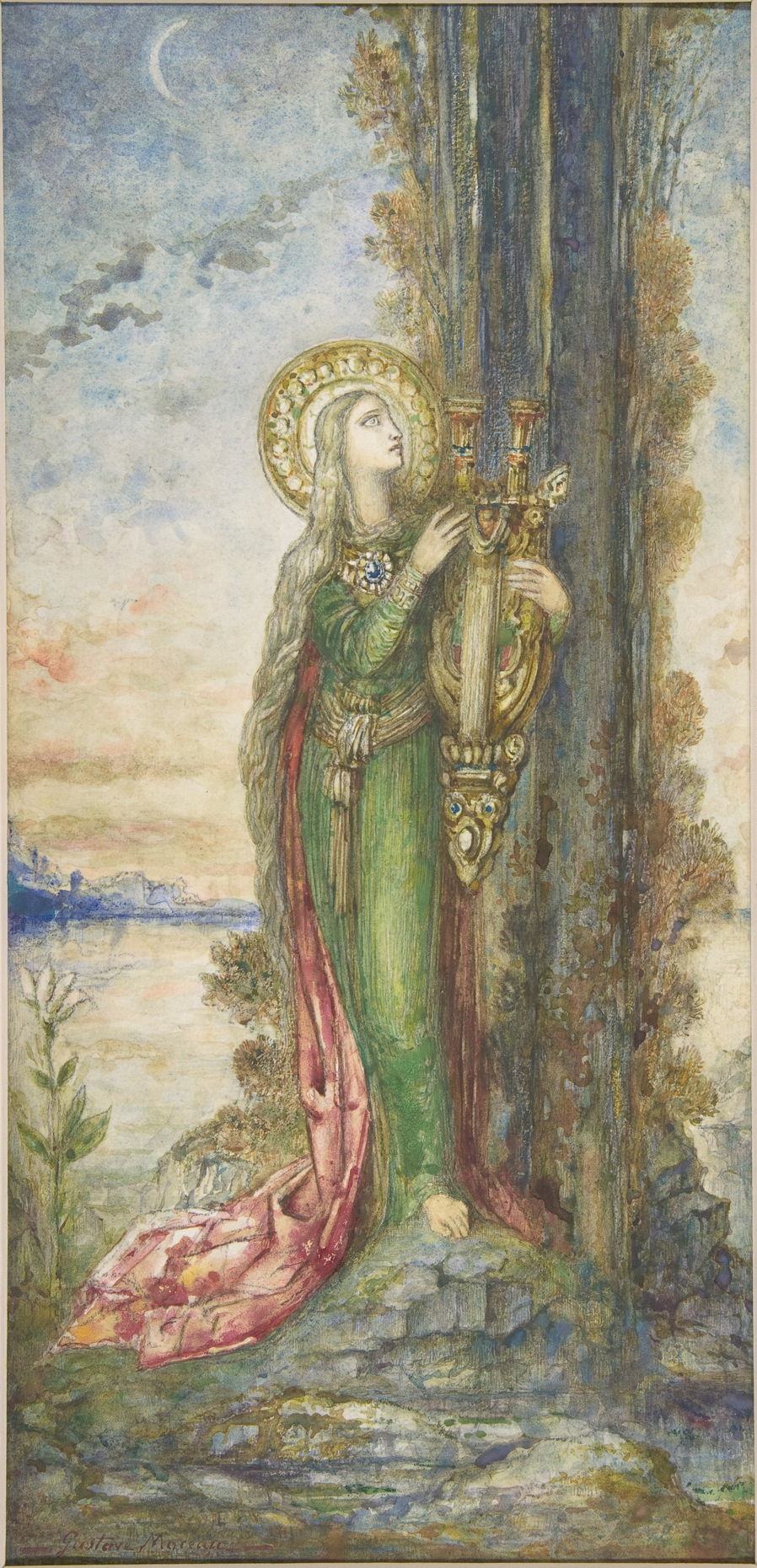Lyres may be most strongly associated with Apollo, Orpheus and lyric poets, but they’re also seen more widely as symbols of music, the arts more generally, and culture. These can result in some associations that might strike you as odd.

In Jacques-Louis David’s depiction of The Love of Helen and Paris from 1788, the couple pose in front of their bed with its rumpled sheets. He is naked and playing his lyre, his cheeks flushed. She wears diaphanous clothing that has slipped off her right shoulder, and her cheeks are distinctly flushed too. Watching over them is a small statue of Aphrodite.

In 1801, JAD Ingres’s painting of Achilles Receiving the Envoys of Agamemnon made him the victor of that year’s competition for the Prix de Rome, and launched him on his career as one of the great history painters. The two envoys are at the right, explaining Agamemnon’s demand to Achilles at the left, who is clutching his lyre as he rises from his seat in anger, as shown in the detail below. Patroclus stands behind him, wearing his helmet and a look of bemusement.


Gustave Moreau painted at least two late works showing the patron saint of music, Saint Cecilia. That from 1890–95 shows her playing an ornate lyre, rather than her more conventional keyboard instrument.
Lyres were also adopted by several of the symbolist artists during the late nineteenth century. Among them Alphonse Osbert seems to have found a place for a lyre in most of his works.

His late painting of Evening Harmony on the Sea from 1930 is suggestive of Sappho, although these rocks aren’t intended to represent the Leucadian Cliff from which she is reputed to have thrown herself.

Henri-Jean Guillaume Martin is one of the few who made the association between angels and lyres. The title of The Poets of Gay Knowledge from 1893 uses the word gay in its older sense of being full of joy. Set in a barren wood at night, three classical muses float without wings, two of them playing lyres. Below are two figures who appear to refer to Dante (centre) and Virgil (right) from Dante’s Divine Comedy.
In some paintings, lyres appear far from home.

Edward Poynter’s portrait of The Siren from about 1864 shows one of these predatory creatures playing a large and ornate instrument.

In George Frederic Watts’ painting of Hope from 1886, a lyre is part of a more elaborate allegory. One of a series intended for a grand ‘House of Life’, Watts broke with tradition and shows this personification blind, her ear bent to listen intently to the one remaining string on her lyre. She sits on the globe, one tiny star twinkling faintly above, her efforts seemingly in vain, but always in hope.
From the nineteenth century, more obscure relatives of lyres appeared in paintings by Dante Gabriel Rossetti, and in one case a painting by the British landscape painter Spencer Gore.

Gore’s painting of the musical double act of Inez and Taki (1910) is one of his views from inside the Alhambra Theatre of Varieties, a successful music hall of the day. This couple are playing antiquated lyre guitars, a strange choice of instrument.

